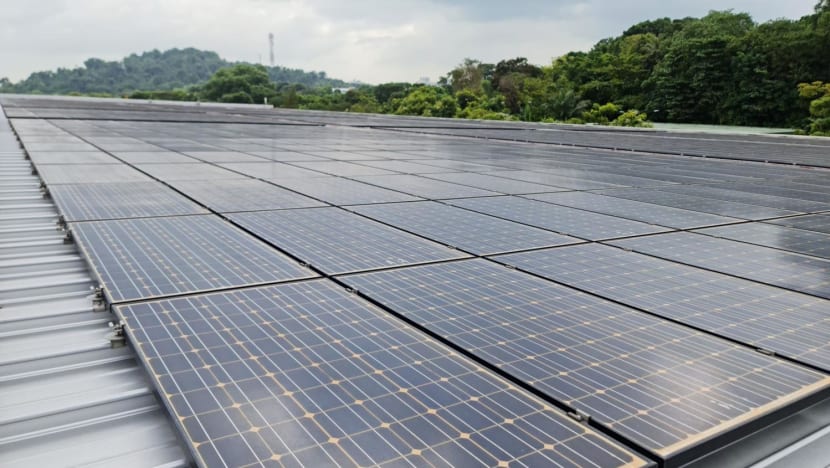Sentosa, RWS to install solar panels at 18 locations as part of carbon neutrality efforts

Solar panels are seen on the roof of the Revenge of the Mummy attraction at Universal Studios Singapore. (Photo: Resorts World Sentosa)
SINGAPORE: Sentosa and Resorts World Sentosa (RWS) are embarking on a large-scale deployment of solar panels to harness energy across the island from this month, as part of its efforts to go carbon neutral by 2030.
The panels will be installed at a new batch of 18 sites, including Palawan Kidz City, Beach Station, Universal Studios Singapore and Hard Rock Hotel, said Sentosa Development Corporation (SDC) on Wednesday (Jun 15).
This marks the first major renewable energy milestone under the refreshed Sustainable Sentosa roadmap, which was launched in September last year.
Under this, Sentosa has committed to becoming a carbon neutral destination by 2030 and a “globally recognised, certified sustainable tourism destination”. It is also studying other sources of renewable energy, such as tidal energy and waste-to-energy generators, as part of its long-term strategies.
Small-scale pilots are currently being explored with a view of scaling them for mass deployment should they prove successful. The island aims to power 10 per cent of its electricity usage through onsite renewable energy by 2030.
DEPLOYMENT AT 18 SITES, TENDER LAUNCHED
As part of the deployment, SDC launched a tender on Wednesday for the installation of solar cells, marking the first time that “rooftops with varying tenures are being consolidated into a single tender in Singapore”, it said.
These will include seven sites such as Palawan Kidz City, Beach Station and three Sentosa Line cable car stations.
“The consolidation will strengthen the tender’s commercial viability, with more spaces activated for solar energy generation,” SDC said.
“Under this tender, tenure refers to the duration that each rooftop is available for photovoltaic cell installations, based on considerations such as development and renovation plans for each building.”
The locations were chosen after taking into account the availability of sufficient sunlight and unobstructed guest experience, it added.
SDC’s chief executive officer Thien Kwee Eng noted that solar power is one of the most viable renewable sources of energy for Sentosa and Singapore, but the challenge is in optimising underutilised spaces to harness its potential.
“The deployment of photovoltaic cells across Sentosa’s establishments through a consolidated approach, comprising different rooftops with varying sizes and tenures, is an illustration of how we can collaborate as a business ecosystem to tap on such opportunities,” she said.
Separately, RWS will begin installing such cells at 11 sites on its premises, including the rooftops of Universal Studios and Hard Rock Hotel.
“These 11 new sites, along with an additional site at RWS’s warehouse at Pandan Green Gardens, will quadruple RWS’s existing solar network which already hosts one of the largest solar photovoltaic systems in Singapore’s hospitality sector,” said SDC.
Collectively, the solar panels at the 18 new sites will cover about 2.5 ha, with a solar capacity of 3.094 megawatt-peak (MWp). This can produce 3,871,500 kilowatt-hours (kWh) of clean energy annually when fully installed by 2023, said SDC.
“This will result in an overall reduction of 1,643 tCO2 per year, which is equivalent to the carbon generated by 60,000 hotel room nights.”
Mr Tan Hee Teck, CEO of RWS, said the transition to renewable energy is “an important means to combat climate change and forms an integral part of RWS’ decarbonisation strategy”.
“Our aim is to accelerate our transition to next generation renewable energy which includes solar, wind, tidal and kinetic energy through applied research and test-bedding at RWS, which will then be adapted for scalability across a variety of environments within our resort,” he added.
“This will all culminate towards RWS’s goal of achieving carbon neutrality by 2030.”


















